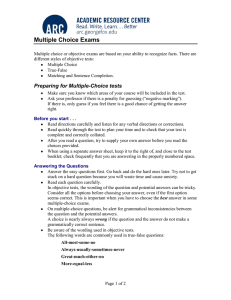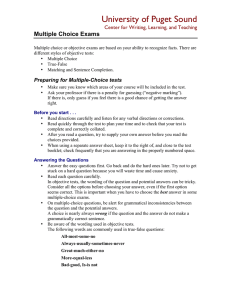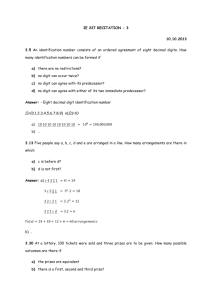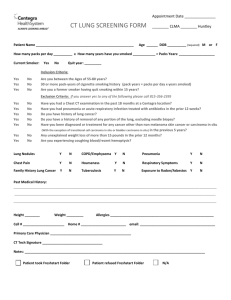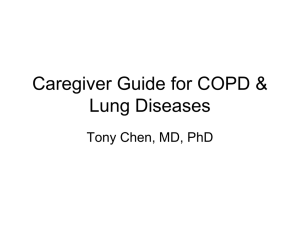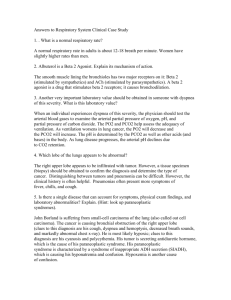Probability (Math 336)
advertisement
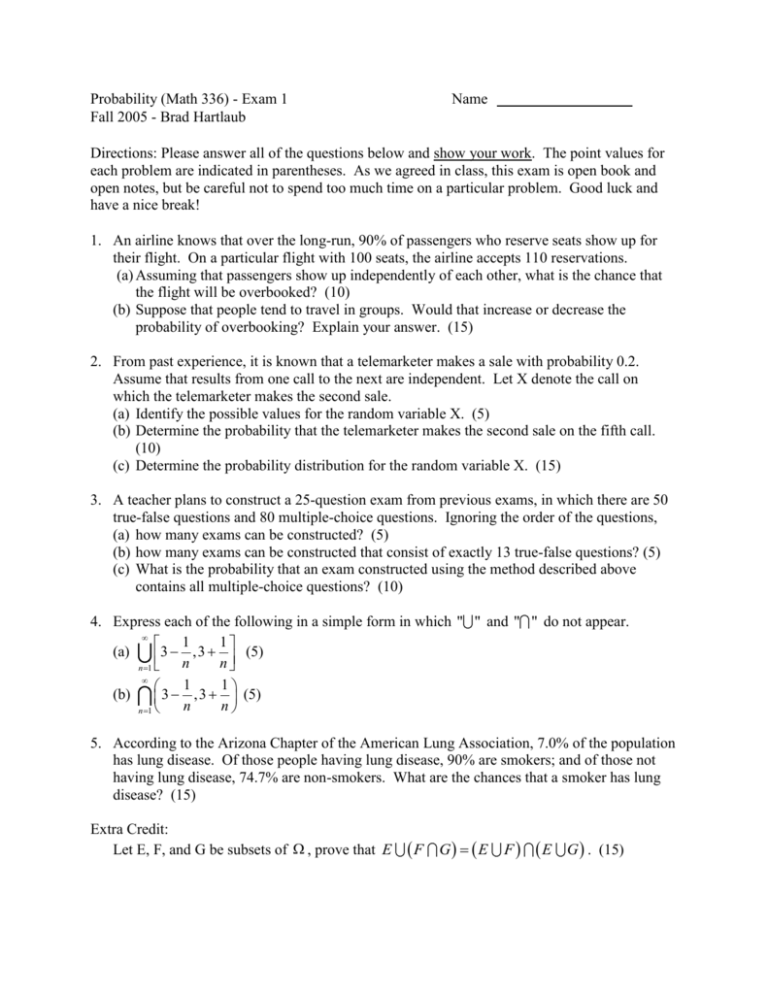
Probability (Math 336) - Exam 1 Fall 2005 - Brad Hartlaub Name Directions: Please answer all of the questions below and show your work. The point values for each problem are indicated in parentheses. As we agreed in class, this exam is open book and open notes, but be careful not to spend too much time on a particular problem. Good luck and have a nice break! 1. An airline knows that over the long-run, 90% of passengers who reserve seats show up for their flight. On a particular flight with 100 seats, the airline accepts 110 reservations. (a) Assuming that passengers show up independently of each other, what is the chance that the flight will be overbooked? (10) (b) Suppose that people tend to travel in groups. Would that increase or decrease the probability of overbooking? Explain your answer. (15) 2. From past experience, it is known that a telemarketer makes a sale with probability 0.2. Assume that results from one call to the next are independent. Let X denote the call on which the telemarketer makes the second sale. (a) Identify the possible values for the random variable X. (5) (b) Determine the probability that the telemarketer makes the second sale on the fifth call. (10) (c) Determine the probability distribution for the random variable X. (15) 3. A teacher plans to construct a 25-question exam from previous exams, in which there are 50 true-false questions and 80 multiple-choice questions. Ignoring the order of the questions, (a) how many exams can be constructed? (5) (b) how many exams can be constructed that consist of exactly 13 true-false questions? (5) (c) What is the probability that an exam constructed using the method described above contains all multiple-choice questions? (10) 4. Express each of the following in a simple form in which " " and " " do not appear. 1 1 3 ,3 (a) (5) n n n 1 1 1 (b) 3 ,3 (5) n n n 1 5. According to the Arizona Chapter of the American Lung Association, 7.0% of the population has lung disease. Of those people having lung disease, 90% are smokers; and of those not having lung disease, 74.7% are non-smokers. What are the chances that a smoker has lung disease? (15) Extra Credit: Let E, F, and G be subsets of , prove that E F G E F E G . (15)

